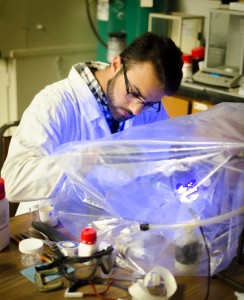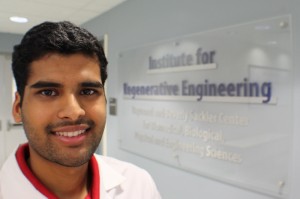Dr. Annamaria Csizmadia’s educational journey has spanned thousands of miles and multiple disciplines. Born and raised in Hungary, she completed her secondary education at a boarding school that allowed her to delve into foreign languages. She studied Russian, German, English, and Latin in high school. Her growing proficiency in English and German ignited her intellectual curiosity about cultural diversity and her desire to pursue higher education outside her native country. Through a number of formal experiences and fortuitous encounters, she was afforded invaluable opportunities to live, work, and study in Germany and the United States.
She earned the equivalent of an undergraduate degree in English and German language and literature at the University of Trier in Germany. After studying in Germany for four years, she moved to the United States to pursue a master’s degree in German literature at the University of Missouri in Columbia, Mo. Although Dr. Csizmadia learned to appreciate the depth and breadth of German literature, by the end of her master’s studies, her academic interest changed from literary inquiries to analyses of cultural variation in human development. Thus, she shifted her academic training from humanities to social sciences and enrolled in the doctoral program in Human Development and Family Studies (HDFS) at the University of Missouri. Inspired by personal experiences, close friendships, and cross-cultural studies, she began to research cultural diversity and ethnic-racial minority families, with particular focus on Black American youth, immigrant families, and multiracial children. She completed her doctoral degree in Human Development and Family Studies along with graduate certificates in Black Studies and International Development in 2008. Her dissertation research examined the role of racial identification in young Black-White biracial children’s social development from kindergarten through fifth grade.
In August 2008, Dr. Csizmadia joined the Human Development and Family Studies department at the University of Connecticut. She regularly teaches courses on individual and family development, diversity issues, adolescent development, and research methods at the Stamford regional campus, and occasionally a graduate course on early and middle childhood at Storrs. Through the years, she has mentored dozens of undergraduate students who completed research practica, internships, independent studies, as well as Honors thesis research. Several of her undergraduate students have won undergraduate research awards such as the SHARE Award, the SURF Award, and Travel Awards to attend national conferences.
Her research on racial identity, ethnic-racial socialization, and psychosocial development in multiracial and immigrant children has been disseminated at conferences nationally and internationally, and in well-recognized peer-reviewed journals such as Family, Relations, Social Development, Parenting: Sciences and Practice, Advances in Life Course Research, Sociological Compass, Journal of Marriage and Family, Journal of Black Psychology, and Maternal and Child Health Journal.
“It has been personally and professionally gratifying and inspiring for me to engage many of my undergraduate students at the Stamford campus in my research. It thrills me to see my students—many of whom remind me of myself (young, ambitious, first-generation college students, and of immigrant background)—jump at the opportunity to stretch themselves academically through involvement in research.”



